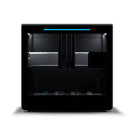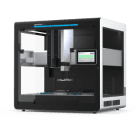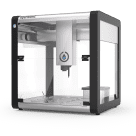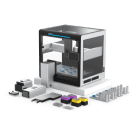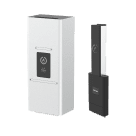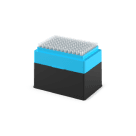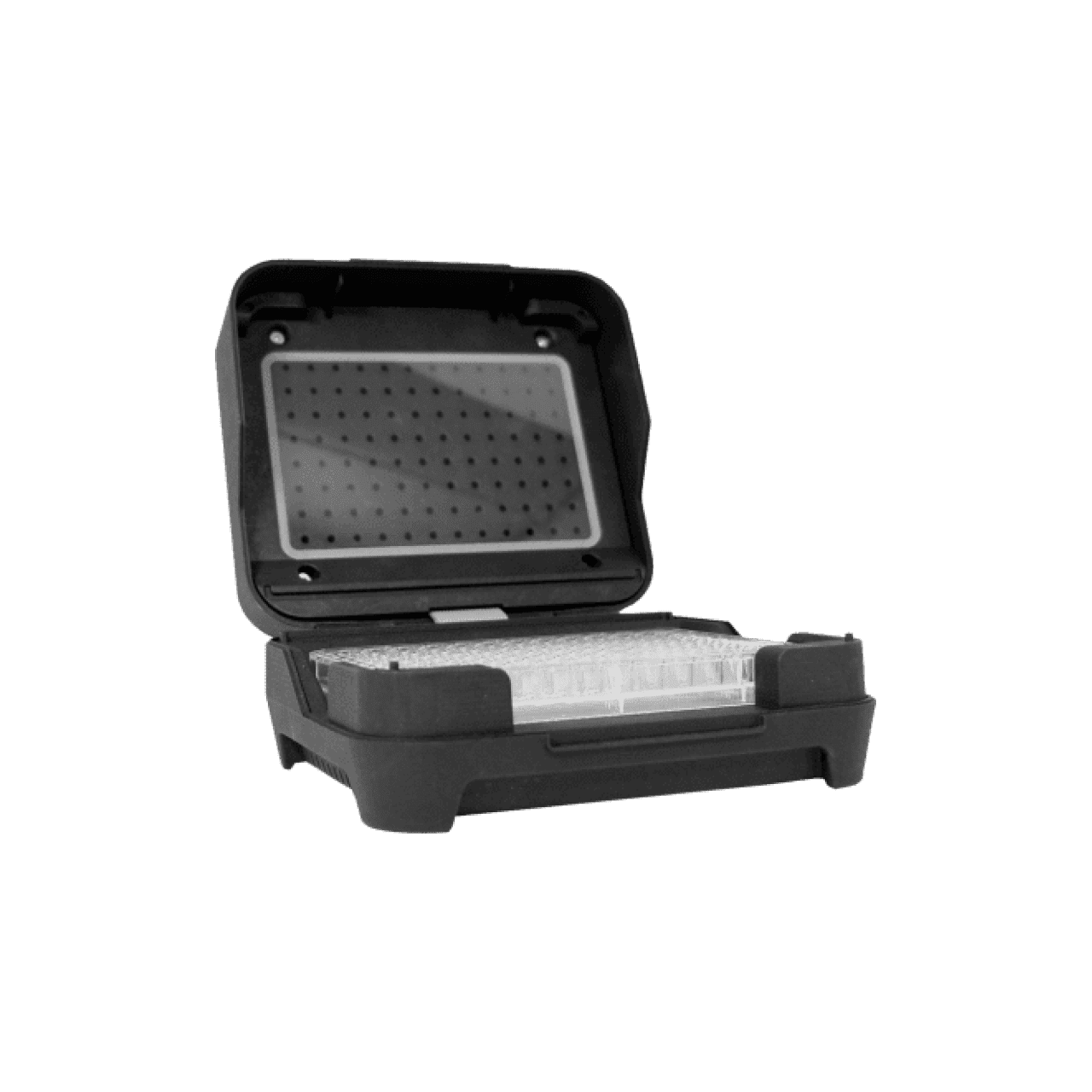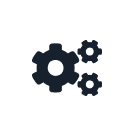Protocol Examples¶
This page provides simple, ready-made protocols for Flex and OT-2. Feel free to copy and modify these examples to create unique protocols that help automate your laboratory workflows. Also, experimenting with these protocols is another way to build upon the skills you’ve learned from working through the tutorial. Try adding different hardware, labware, and commands to a sample protocol and test its validity after importing it into the Opentrons App.
Using These Protocols¶
These sample protocols are designed for anyone using an Opentrons Flex or OT-2 liquid handling robot. For our users with little to no Python experience, we’ve taken some liberties with the syntax and structure of the code to make it easier to understand. For example, we’ve formatted the samples with line breaks to show method arguments clearly and to avoid horizontal scrolling. Additionally, the methods use named arguments instead of positional arguments. For example:
# This code uses named arguments
tiprack_1 = protocol.load_labware(
load_name="opentrons_flex_96_tiprack_200ul",
location="D2")
# This code uses positional arguments
tiprack_1 = protocol.load_labware("opentrons_flex_96_tiprack_200ul", "D2")
Both examples instantiate the variable tiprack_1 with a Flex tip rack, but the former is more explicit. It shows the parameter name and its value together (e.g. location="D2"), which may be helpful when you’re unsure about what’s going on in a protocol code sample.
Python developers with more experience should feel free to ignore the code styling used here and work with these examples as you like.
Instruments and Labware¶
The sample protocols all use the following pipettes:
Flex 1-Channel Pipette (5–1000 µL). The API load name for this pipette is
flex_1channel_1000.P300 Single-Channel GEN2 pipette for the OT-2. The API load name for this pipette is
p300_single_gen2.
They also use the labware listed below:
Labware type |
Labware name |
API load name |
|---|---|---|
Reservoir |
USA Scientific 12-Well Reservoir 22 mL |
|
Well plate |
Corning 96-Well Plate 360 µL Flat |
|
Flex tip rack |
Opentrons Flex 96 Tip Rack 200 µL |
|
OT-2 tip rack |
Opentrons 96 Tip Rack 300 µL |
|
Protocol Template¶
This code only loads the instruments and labware listed above, and performs no other actions. Many code snippets from elsewhere in the documentation will run without modification when added at the bottom of this template. You can also use it to start writing and testing your own code.
from opentrons import protocol_api
requirements = {"robotType": "Flex", "apiLevel": "2.27"}
def run(protocol: protocol_api.ProtocolContext):
# load tip rack in deck slot D3
tiprack = protocol.load_labware(
load_name="opentrons_flex_96_tiprack_1000ul", location="D3"
)
# attach pipette to left mount
pipette = protocol.load_instrument(
instrument_name="flex_1channel_1000",
mount="left",
tip_racks=[tiprack]
)
# load well plate in deck slot D2
plate = protocol.load_labware(
load_name="corning_96_wellplate_360ul_flat", location="D2"
)
# load reservoir in deck slot D1
reservoir = protocol.load_labware(
load_name="usascientific_12_reservoir_22ml", location="D1"
)
# load trash bin in deck slot A3
trash = protocol.load_trash_bin(location="A3")
# Put protocol commands here
from opentrons import protocol_api
metadata = {"apiLevel": "2.27"}
def run(protocol: protocol_api.ProtocolContext):
# load tip rack in deck slot 3
tiprack = protocol.load_labware(
load_name="opentrons_96_tiprack_300ul", location=3
)
# attach pipette to left mount
pipette = protocol.load_instrument(
instrument_name="p300_single_gen2",
mount="left",
tip_racks=[tiprack]
)
# load well plate in deck slot 2
plate = protocol.load_labware(
load_name="corning_96_wellplate_360ul_flat", location=2
)
# load reservoir in deck slot 1
reservoir = protocol.load_labware(
load_name="usascientific_12_reservoir_22ml", location=1
)
# Put protocol commands here
Transferring Liquids¶
These protocols demonstrate how to move 100 µL of liquid from one well to another.
Basic Method¶
This protocol uses some building block commands to tell the robot, explicitly, where to go to aspirate and dispense liquid. These commands include the pick_up_tip(), aspirate(), and dispense() methods.
from opentrons import protocol_api
requirements = {"robotType": "Flex", "apiLevel":"2.27"}
def run(protocol: protocol_api.ProtocolContext):
plate = protocol.load_labware(
load_name="corning_96_wellplate_360ul_flat",
location="D1")
tiprack_1 = protocol.load_labware(
load_name="opentrons_flex_96_tiprack_200ul",
location="D2")
trash = protocol.load_trash_bin("A3")
pipette = protocol.load_instrument(
instrument_name="flex_1channel_1000",
mount="left",
tip_racks=[tiprack_1])
pipette.pick_up_tip()
pipette.aspirate(100, plate["A1"])
pipette.dispense(100, plate["B1"])
pipette.drop_tip()
from opentrons import protocol_api
metadata = {"apiLevel": "2.27"}
def run(protocol: protocol_api.ProtocolContext):
plate = protocol.load_labware(
load_name="corning_96_wellplate_360ul_flat",
location=1)
tiprack_1 = protocol.load_labware(
load_name="opentrons_96_tiprack_300ul",
location=2)
p300 = protocol.load_instrument(
instrument_name="p300_single",
mount="left",
tip_racks=[tiprack_1])
p300.pick_up_tip()
p300.aspirate(100, plate["A1"])
p300.dispense(100, plate["B1"])
p300.drop_tip()
Advanced Method¶
These protocols accomplish the same thing as the previous example, but a little more efficiently. Notice how they use the InstrumentContext.transfer() or InstrumentContext.transfer_with_liquid_class() methods to move liquid between well plates. Because each is a complex command, you don’t need separate calls to aspirate or dispense here.
Let’s start with a basic complex command, using transfer(). The source and destination well arguments (e.g., plate["A1"], plate["B1"]) are part of transfer() method parameters.
from opentrons import protocol_api
requirements = {"robotType": "Flex", "apiLevel": "2.27"}
def run(protocol: protocol_api.ProtocolContext):
plate = protocol.load_labware(
load_name="corning_96_wellplate_360ul_flat",
location="D1")
tiprack_1 = protocol.load_labware(
load_name="opentrons_flex_96_tiprack_200ul",
location="D2")
trash = protocol.load_trash_bin("A3")
pipette = protocol.load_instrument(
instrument_name="flex_1channel_1000",
mount="left",
tip_racks=[tiprack_1])
# transfer 100 µL from well A1 to well B1
pipette.transfer(100, plate["A1"], plate["B1"])
from opentrons import protocol_api
metadata = {"apiLevel": "2.27"}
def run(protocol: protocol_api.ProtocolContext):
plate = protocol.load_labware(
load_name="corning_96_wellplate_360ul_flat",
location=1)
tiprack_1 = protocol.load_labware(
load_name="opentrons_96_tiprack_300ul",
location=2)
p300 = protocol.load_instrument(
instrument_name="p300_single",
mount="left",
tip_racks=[tiprack_1])
# transfer 100 µL from well A1 to well B1
p300.transfer(100, plate["A1"], plate["B1"])
When you use the liquid class command transfer_with_liquid_class(), you’ll need to specify a liquid_class along with volume, source and destination, and trash parameters.
Opentrons-verified liquid class definitions are based on Flex pipette and tip combinations. The API will raise an error if you try to perform a liquid class transfer with one of these definitions in an OT-2 protocol.
from opentrons import protocol_api
requirements = {"robotType": "Flex", "apiLevel": "2.27"}
def run(protocol: protocol_api.ProtocolContext):
plate = protocol.load_labware(
load_name="corning_96_wellplate_360ul_flat",
location="D1"
)
tiprack_1 = protocol.load_labware(
load_name="opentrons_flex_96_tiprack_200ul",
location="C1"
)
p1000 = protocol.load_instrument(
instrument_name="flex_1channel_1000",
mount="left",
tip_racks=[tiprack_1]
)
liquid_1 = protocol.get_liquid_class("glycerol_50")
trash = protocol.load_trash_bin("A3")
# transfer 100 µL from well A1 to well B1
p1000.transfer_with_liquid_class(
liquid_class=liquid_1,
volume=100,
source=plate["A1"],
dest=plate["B1"]
)
Loops¶
In Python, a loop is an instruction that keeps repeating an action until a specific condition is met.
When used in a protocol, loops automate repetitive steps such as aspirating and dispensing liquids from a reservoir to a a range of wells, or all the wells, in a well plate. For example, this code sample loops through the numbers 0 to 7, and uses the loop’s current value to transfer liquid from all the wells in a reservoir to all the wells in a 96-well plate.
from opentrons import protocol_api
requirements = {"robotType": "Flex", "apiLevel":"2.27"}
def run(protocol: protocol_api.ProtocolContext):
plate = protocol.load_labware(
load_name="corning_96_wellplate_360ul_flat",
location="D1")
tiprack_1 = protocol.load_labware(
load_name="opentrons_flex_96_tiprack_200ul",
location="D2")
reservoir = protocol.load_labware(
load_name="usascientific_12_reservoir_22ml",
location="D3")
trash = protocol.load_trash_bin("A3")
pipette = protocol.load_instrument(
instrument_name="flex_1channel_1000",
mount="left",
tip_racks=[tiprack_1])
# distribute 20 µL from reservoir:A1 -> plate:row:1
# distribute 20 µL from reservoir:A2 -> plate:row:2
# etc...
# range() starts at 0 and stops before 8, creating a range of 0-7
for i in range(8):
pipette.distribute(20, reservoir.wells()[i], plate.rows()[i])
from opentrons import protocol_api
metadata = {"apiLevel": "2.27"}
def run(protocol: protocol_api.ProtocolContext):
plate = protocol.load_labware(
load_name="corning_96_wellplate_360ul_flat",
location=1)
tiprack_1 = protocol.load_labware(
load_name="opentrons_96_tiprack_300ul",
location=2)
reservoir = protocol.load_labware(
load_name="usascientific_12_reservoir_22ml",
location=4)
p300 = protocol.load_instrument(
instrument_name="p300_single",
mount="left",
tip_racks=[tiprack_1])
# distribute 20 µL from reservoir:A1 -> plate:row:1
# distribute 20 µL from reservoir:A2 -> plate:row:2
# etc...
# range() starts at 0 and stops before 8, creating a range of 0-7
for i in range(8):
p300.distribute(20, reservoir.wells()[i], plate.rows()[i])
Notice here how Python’s range class (e.g., range(8)) determines how many times the code loops. Also, in Python, a range of numbers is exclusive of the end value and counting starts at 0, not 1. For the Corning 96-well plate used here, this means well A1=0, B1=1, C1=2, and so on to the last well in the row, which is H1=7.
Multiple Air Gaps¶
Opentrons electronic pipettes can do some things that a human cannot do with a pipette, like accurately alternate between liquid and air aspirations that create gaps within the same tip. The protocol shown below shows you how to aspirate from the first five wells in the reservoir and create an air gap between each sample.
from opentrons import protocol_api
requirements = {"robotType": "Flex", "apiLevel":"2.27"}
def run(protocol: protocol_api.ProtocolContext):
plate = protocol.load_labware(
load_name="corning_96_wellplate_360ul_flat",
location="D1")
tiprack_1 = protocol.load_labware(
load_name="opentrons_flex_96_tiprack_1000ul",
location="D2")
reservoir = protocol.load_labware(
load_name="usascientific_12_reservoir_22ml",
location="D3")
trash = protocol.load_trash_bin("A3")
pipette = protocol.load_instrument(
instrument_name="flex_1channel_1000",
mount="left",
tip_racks=[tiprack_1])
pipette.pick_up_tip()
# aspirate from the first 5 wells
for well in reservoir.wells()[:5]:
pipette.aspirate(volume=35, location=well)
pipette.air_gap(10)
pipette.dispense(225, plate["A1"])
pipette.return_tip()
from opentrons import protocol_api
metadata = {"apiLevel": "2.27"}
def run(protocol: protocol_api.ProtocolContext):
plate = protocol.load_labware(
load_name="corning_96_wellplate_360ul_flat",
location=1)
tiprack_1 = protocol.load_labware(
load_name="opentrons_96_tiprack_300ul",
location=2)
reservoir = protocol.load_labware(
load_name="usascientific_12_reservoir_22ml",
location=3)
p300 = protocol.load_instrument(
instrument_name="p300_single",
mount="left",
tip_racks=[tiprack_1])
p300.pick_up_tip()
# aspirate from the first 5 wells
for well in reservoir.wells()[:5]:
p300.aspirate(volume=35, location=well)
p300.air_gap(10)
p300.dispense(225, plate["A1"])
p300.return_tip()
Notice here how Python’s slice functionality (in the code sample as [:5]) lets us select the first five wells of the well plate only. Also, in Python, a range of numbers is exclusive of the end value and counting starts at 0, not 1. For the USA Scientific 12-well reservoir used here, this means well A1=0, A2=1, A3=2, and so on to the last well used, which is A5=4. See also, the Commands section of the Tutorial.
Dilution¶
This protocol dispenses diluent to all wells of a Corning 96-well plate. Next, it dilutes 8 samples from the reservoir across all 8 columns of the plate.
from opentrons import protocol_api
requirements = {"robotType": "Flex", "apiLevel": "2.27"}
def run(protocol: protocol_api.ProtocolContext):
plate = protocol.load_labware(
load_name="corning_96_wellplate_360ul_flat",
location="D1")
tiprack_1 = protocol.load_labware(
load_name="opentrons_flex_96_tiprack_200ul",
location="D2")
tiprack_2 = protocol.load_labware(
load_name="opentrons_flex_96_tiprack_200ul",
location="D3")
reservoir = protocol.load_labware(
load_name="usascientific_12_reservoir_22ml",
location="C1")
trash = protocol.load_trash_bin("A3")
pipette = protocol.load_instrument(
instrument_name="flex_1channel_1000",
mount="left",
tip_racks=[tiprack_1, tiprack_2])
# Dispense diluent
pipette.distribute(50, reservoir["A12"], plate.wells())
# loop through each row
for i in range(8):
# save the source well and destination column to variables
source = reservoir.wells()[i]
row = plate.rows()[i]
# transfer 30 µL of source to first well in column
pipette.transfer(30, source, row[0], mix_after=(3, 25))
# dilute the sample down the column
pipette.transfer(
30, row[:11], row[1:],
mix_after=(3, 25))
from opentrons import protocol_api
metadata = {"apiLevel": "2.27"}
def run(protocol: protocol_api.ProtocolContext):
plate = protocol.load_labware(
load_name="corning_96_wellplate_360ul_flat",
location=1)
tiprack_1 = protocol.load_labware(
load_name="opentrons_96_tiprack_300ul",
location=2)
tiprack_2 = protocol.load_labware(
load_name="opentrons_96_tiprack_300ul",
location=3)
reservoir = protocol.load_labware(
load_name="usascientific_12_reservoir_22ml",
location=4)
p300 = protocol.load_instrument(
instrument_name="p300_single",
mount="left",
tip_racks=[tiprack_1, tiprack_2])
# Dispense diluent
p300.distribute(50, reservoir["A12"], plate.wells())
# loop through each row
for i in range(8):
# save the source well and destination column to variables
source = reservoir.wells()[i]
row = plate.rows()[i]
# transfer 30 µL of source to first well in column
p300.transfer(30, source, row[0], mix_after=(3, 25))
# dilute the sample down the column
p300.transfer(
30, row[:11], row[1:],
mix_after=(3, 25))
Notice here how the code sample loops through the rows and uses slicing to distribute the diluent. For information about these features, see the Loops and Air Gaps examples above. See also, the Commands section of the Tutorial.
Plate Mapping¶
This protocol dispenses different volumes of liquids to a well plate and automatically refills the pipette when empty.
from opentrons import protocol_api
requirements = {"robotType": "Flex", "apiLevel": "2.27"}
def run(protocol: protocol_api.ProtocolContext):
plate = protocol.load_labware(
load_name="corning_96_wellplate_360ul_flat",
location="D1")
tiprack_1 = protocol.load_labware(
load_name="opentrons_flex_96_tiprack_200ul",
location="D2")
tiprack_2 = protocol.load_labware(
load_name="opentrons_flex_96_tiprack_200ul",
location="D3")
reservoir = protocol.load_labware(
load_name="usascientific_12_reservoir_22ml",
location="C1")
trash = protocol.load_trash_bin("A3")
pipette = protocol.load_instrument(
instrument_name="flex_1channel_1000",
mount="right",
tip_racks=[tiprack_1, tiprack_2])
# Volume amounts are for demonstration purposes only
water_volumes = [
1, 2, 3, 4, 5, 6, 7, 8,
9, 10, 11, 12, 13, 14, 15, 16,
17, 18, 19, 20, 21, 22, 23, 24,
25, 26, 27, 28, 29, 30, 31, 32,
33, 34, 35, 36, 37, 38, 39, 40,
41, 42, 43, 44, 45, 46, 47, 48,
49, 50, 51, 52, 53, 54, 55, 56,
57, 58, 59, 60, 61, 62, 63, 64,
65, 66, 67, 68, 69, 70, 71, 72,
73, 74, 75, 76, 77, 78, 79, 80,
81, 82, 83, 84, 85, 86, 87, 88,
89, 90, 91, 92, 93, 94, 95, 96
]
pipette.distribute(water_volumes, reservoir["A12"], plate.wells())
from opentrons import protocol_api
metadata = {"apiLevel": "2.27"}
def run(protocol: protocol_api.ProtocolContext):
plate = protocol.load_labware(
load_name="corning_96_wellplate_360ul_flat",
location=1)
tiprack_1 = protocol.load_labware(
load_name="opentrons_96_tiprack_300ul",
location=2)
tiprack_2 = protocol.load_labware(
load_name="opentrons_96_tiprack_300ul",
location=3)
reservoir = protocol.load_labware(
load_name="usascientific_12_reservoir_22ml",
location=4)
p300 = protocol.load_instrument(
instrument_name="p300_single",
mount="right",
tip_racks=[tiprack_1, tiprack_2])
# Volume amounts are for demonstration purposes only
water_volumes = [
1, 2, 3, 4, 5, 6, 7, 8,
9, 10, 11, 12, 13, 14, 15, 16,
17, 18, 19, 20, 21, 22, 23, 24,
25, 26, 27, 28, 29, 30, 31, 32,
33, 34, 35, 36, 37, 38, 39, 40,
41, 42, 43, 44, 45, 46, 47, 48,
49, 50, 51, 52, 53, 54, 55, 56,
57, 58, 59, 60, 61, 62, 63, 64,
65, 66, 67, 68, 69, 70, 71, 72,
73, 74, 75, 76, 77, 78, 79, 80,
81, 82, 83, 84, 85, 86, 87, 88,
89, 90, 91, 92, 93, 94, 95, 96
]
p300.distribute(water_volumes, reservoir["A12"], plate.wells())

